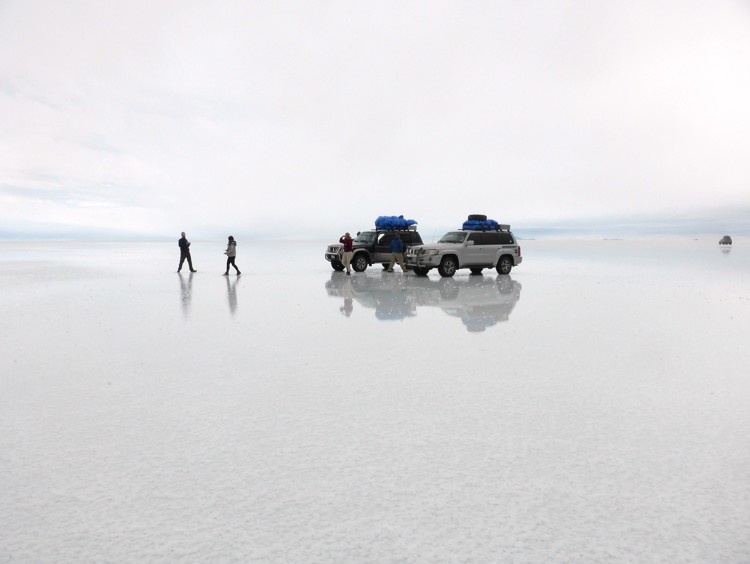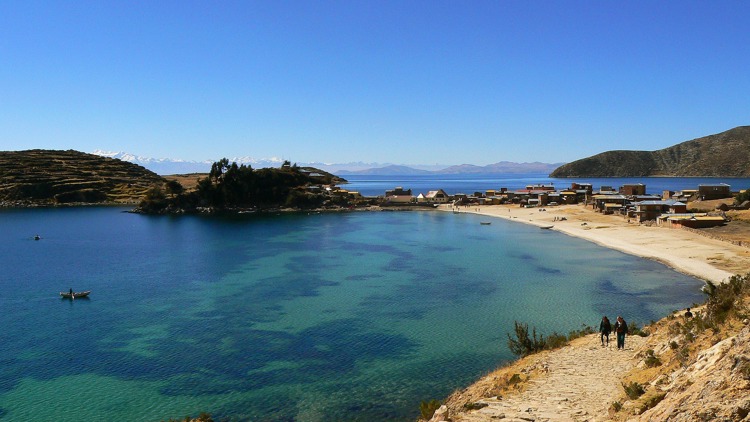The Alien Wonder of Bolivia
Imagine walking along a perfectly flat, crystal clear ground that mirrors the big fluffy clouds in the sky above and your excited traveling self perfectly. This isn’t a fun house or a trick of the eye, this magnificent place is real, and it can be found in the wondrous South American country of Bolivia. Known by the locals as Salar de Uyuni, the salt flats of Bolivia are the largest in the world spanning 10,582 square kilometers at 3,656 meters above sea level. In prehistoric times, the area was a lake that has subsequently gone dry, leaving behind a bright white, desert-like landscape of salt, cactus-laden islands and rock formations. This alien landscape is entirely unique, and has people flocking from all over the world to experience its incomparable beauty.

The Alien Terrain of the Salt Flats
At least 30,000 years ago, Salar de Uyuni was underwater as part of a much larger lake surrounded by mountains. The Aymara, the indiginous people of the region, believed that the mountains that surrounded the lake were once giants. Legend has it that the Salar was formed by the salty tears and milk of one of the giants who was abandoned by her lover while breastfeeding their son. When the lake dried up after thousands of years, it split into smaller dried up lakes, and the Salar de Uyuni became the magnificent landscape we’re all awed by today.
The weather and time of year largely affects the landscape that you’ll find when you visit the Salar de Uyuni, but no matter when you come you will experience something incredible. When it’s dry, the flats are caked with so much salt it frequently looks like they’re covered in a layer of fresh powdery snow. The bright white salt dries in a honeycomb pattern that spreads as far and wide as the eye can see. The encrusted salt is magnificent and blinding, but most people prefer to visit during the rainy season to see something even more mind blowing. The wet season in Bolivia spans from December to April. When it rains during this time, the rain sits on the deeply encrusted salt and creates a perfect, surreal mirror effect. Look down to see the world around you and yourself reflected back at you.
The Salar de Uyuni is any photographer’s dream location. Whether you visit during the wet season to take advantage of the famous mirror effects, or during the dry season when the bright whiteness of the salt reflects up at you for miles and miles, you’re guaranteed to get some pictures that will make your friends wildly jealous. The salt flats are so flat that NASA uses the area to calibrate satellite sensors. The near perfect flatness of the environment gives photographers, both experts and wannabes alike, unparalleled opportunities to play with perspective and capture some truly crazy shots.

The Wonder of Lake Titicaca
Lake Titicaca, which sits on the border between Bolivia and Peru in the Andes Mountains, is the world’s highest navigable lake, sitting at 12,507 feet above sea level. It has a huge surface area of 8,300 square kilometers, making it the largest lake in South America. This magnificent lake is said to be the birthplace of the Incas, and is home to countless ruins and history. Besides earning the highest navigable lake title, Lake Titicaca is world famous for its crystal clear water and its near perfect stillness.
The Andeans believed that Titicaca was the birthplace of the sun, and when you experience the magic of this natural wonder for yourself, it’s easy to feel the majesty behind this belief. According to ancient myths, the God Viracocha came out of the lake and created the sun, the stars and the first people. The lake is an important part of tons of other Inca myths, and offers a lot of mystery for travelers to discover. Lake Titicaca is littered with incredible ancient ruins. Some of these ruins have even been found at the bottom of the lake. Archaeologists are still exploring the area, but so far they have found 180 ruins of ancient monuments in the region. Lake Titicaca has no shortage of stunning natural beauty and rich history for travelers to discover.
There are few places in the world that are as magnificently beautiful and steeped with history as Bolivia.
Dara is avid scuba diver, book worm, and vegetarian foodie with a deep passion for conservation. Her favorite countries so far are Greece, Bosnia and South Africa. She loves writing about anything that encourages people to get outdoors, try something new, and live more sustainably.






